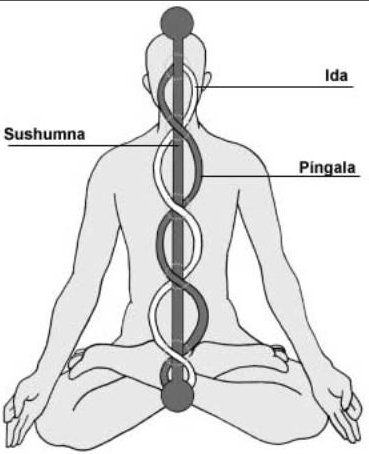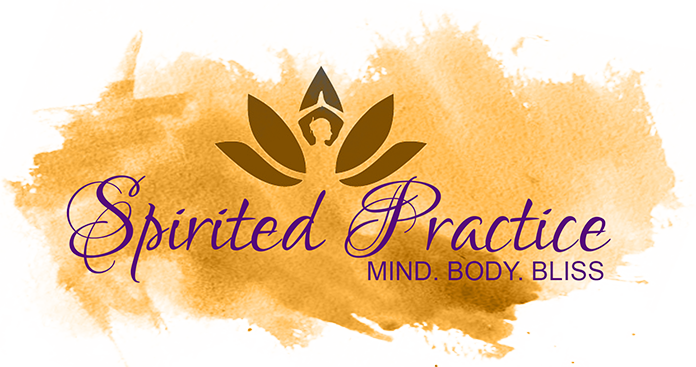ARE WE ENERGY?
Albert Einstein proved that everything is energy when he developed his theory of relativity and the formula, E=mc2, which, in very simplistic terms, says that anything that has mass is just energy in a different form. So it shouldn’t surprise you when I suggest that beyond the physical and mental aspects of being alive, we have an energetic aspect that many of us ignore. The ancient Rishis knew about energy and transformation long before Einstein or modern science was born, as they wrote the ancient Vedas, which translates to sacred knowledge.
 We are all energy, yet can we see it, feel it, or touch? No, most of us cannot. That is one of the reasons we call it the subtle energy body. Many of the pictures that you see of energy in the body are figurative imaginings or what people have seen. Do we really have rainbow-colored flowers spinning in our cakras or energy centers? I don’t think so, but it does help us to visualize what is happening in our body.
We are all energy, yet can we see it, feel it, or touch? No, most of us cannot. That is one of the reasons we call it the subtle energy body. Many of the pictures that you see of energy in the body are figurative imaginings or what people have seen. Do we really have rainbow-colored flowers spinning in our cakras or energy centers? I don’t think so, but it does help us to visualize what is happening in our body. What is the subtle energy body according to yoga? I’ve heard it described in many ways, yet the most commonly held belief is that the body has an energetic system that runs through the body the same was as blood vessels and neural pathways.
What is the subtle energy body according to yoga? I’ve heard it described in many ways, yet the most commonly held belief is that the body has an energetic system that runs through the body the same was as blood vessels and neural pathways.
The Nadis
In yoga, we call them nadis and there are 72,000 nadis. The three main and most important nadis, are the ida representing the female aspect, moon, cooling, tha, as in the second part of Hatha, and ends in the left nostril; the pingala, representing the male aspect, sun, heating, ha, as in the first part of Hatha, and ends in the right nostril; and the sashumna runs up the middle similar to the spine. All three nadis, originate at the root cakra and cross at 5 of the cakras above.
Prana
Prana is our life force; prana can also be considered our breath. We breathe in through our nostrils inviting prana to move down the ida and pingala nadis helping to continue our energy flow. Literally, we breath the life force into our bodies. Various pranayama or breathing practices can alter the flow of prana as can asana or yoga postures.
Hatha Yoga
You may have wondered what it meant when you saw Hatha Yoga on a yoga studio menu. Hatha yoga is the most common form of yoga taught in the US; it is the physical part of the yoga. Whether it’s Krishnamacharya, ashtanga, iyengar, vinyasa, or most other forms of yoga, if it has a physical practice, it is probably Hatha yoga.
The Cakras (pronounced chakras)
The ida and pingala nadis cross at 5 of the energy centers or cakras. The root is where the ida and pingala originate; they cross about 3 fingers below the navel; again at the solar plexus; the heart, the base of the throat and finally at the brow, commonly known as the 3rd eye. The crown cakra at the top of the head is where the shashumna travels to.
I hope you’re still with me. I know for some of you, this is all new terminology and content. I needed to lay the ground work for what I really want to talk about. Blame it on the 24 years of teaching school children; I do.
How does yoga help our energy?
Sadhguru, who writes for the HuffingtonPost, writes, “In yoga, when we say “health,” we don’t look at the body or the mind; we only look at the energy. If your energy body is in proper balance and in full flow, your physical body and mental body will be in perfect health.” Read more:
When my students come in, I look at how their energy and ask them what they need. Then I lead them through a practice that will meet their needs. Sometimes the focus is to relax and contain their energy through calming forward bends or . Other times we need to bring up their energy through sun salutations, back bending or an energizing breathing practice. I tell my students to observe their energy level an hour or two after class because that’s when they’ll really know the affects.
According to yoga and ayurveda (yoga’s sister science), blocks in our energy flow create disease. Blocks can be caused by poor diet, sleep patterns, stress, expending too much or too little energy, and other poor habits. We can practice yoga to move energy through our body; this is why we generally feel better after a yoga practice.
So how do we do this? What about kundalini? They are for my next post. Just know that movement of the breath and the body create healing if done in the right way for your body, your age and your ability. Find a trained yoga specialist to guide you. Namaste.


